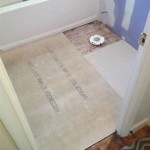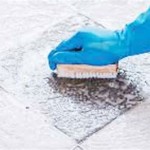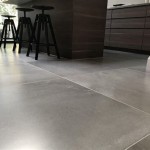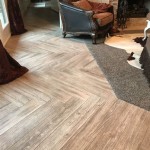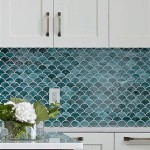Can You Tile Over Breeze Block?
Breeze blocks, also known as concrete masonry units (CMUs), are a popular building material known for their versatility, affordability, and ability to allow air circulation. While they offer practical benefits, they may not always align with desired aesthetic preferences. This often leads homeowners to consider tiling over breeze blocks to enhance the look and functionality of their walls. However, tiling over breeze blocks requires careful consideration and adherence to specific guidelines to ensure a successful and long-lasting outcome.
Understanding the Challenges of Tiling Over Breeze Block
Tiling over breeze blocks presents unique challenges compared to traditional wall surfaces, such as drywall or plaster. The porous nature of breeze blocks and their uneven surface can pose difficulties for tile adhesion. Additionally, the open spaces within the blocks can lead to tile movement and potential cracking. It's crucial to address these challenges properly to achieve a successful tiling project.
Steps for Successful Tiling Over Breeze Block
When considering tiling over breeze blocks, several steps are essential for a successful outcome:
1. Surface Preparation
The foundation for a durable and aesthetically pleasing tile installation lies in thorough surface preparation. This involves:
- Cleaning: Remove any dirt, dust, loose debris, or existing coatings from the breeze block surface. Use a wire brush or power washer to ensure a clean surface.
- Repairing: Fill any cracks or holes with a suitable patching compound designed for concrete surfaces. Allow the patching compound to dry completely before proceeding.
- Sealing: Apply a sealant to the breeze block surface to create a non-porous barrier. This helps to enhance tile adhesion and prevent moisture absorption. Allow the sealant to dry thoroughly before moving on.
2. Choosing the Right Tile Adhesive
Selecting the right tile adhesive is critical for a successful tiling project. For breeze block surfaces, a modified thin-set mortar is recommended. This type of adhesive offers enhanced adhesion and flexibility, accommodating the movement of breeze blocks.
- Modified Thin-set Mortar: This type of adhesive contains polymers that enhance its flexibility and adhesion properties, making it suitable for use on porous and uneven surfaces like breeze blocks. It's typically available in a powder form that is mixed with water to create a workable paste.
3. Applying the Tile Adhesive
When applying the tile adhesive, it's crucial to ensure proper coverage and consistency. The adhesive should be applied to the back of the tile, rather than directly to the breeze block surface. This technique allows for better adhesion and helps to prevent the adhesive from drying out before the tile is placed.
4. Tile Installation
Tile installation requires meticulous attention to detail. The tiles should be placed firmly and evenly, ensuring that they are level and aligned. A tile leveling system can be beneficial in maintaining consistency and preventing movement during the drying process.
5. Grouting and Sealing
After the tiles are set, grout is applied to fill the spaces between them. This process helps to seal the tiles, prevent moisture penetration, and enhance the overall aesthetic appeal. It's important to choose a grout that is compatible with the tile and the adhesive used. Once the grout is dry, a sealant can be applied to further protect the tiles and grout from stains and moisture.
Considerations and Alternatives
While tiling over breeze blocks is achievable, it's essential to weigh the pros and cons. In some cases, alternative options might be more suitable. These might include:
- Installing a Waterproof Membrane: Before tiling, a waterproof membrane can be applied to the breeze block surface to create a barrier against moisture. This can be particularly useful in areas prone to water exposure, such as bathrooms and kitchens.
- Building a New Wall: In some cases, building a new wall using drywall or plasterboard might be a more practical and cost-effective solution. This eliminates the challenges associated with tiling over breeze blocks and provides a smooth, even surface for tiling.
Ultimately, the decision of whether to tile over breeze blocks depends on the specific project requirements, budget, and desired outcome. Thorough planning, proper preparation, and the use of appropriate materials and techniques are essential to achieving a successful and long-lasting tile installation.

Tile Over Blockwork Mike Haduck

Triangle Breeze Block 8x8x4 Cement Tiles In Stock By Original Mission Tile

Modern Uses Of Breeze Blocks Centsational Style

Triangle Breeze Block 8x8x4 Cement Tiles In Stock By Original Mission Tile

Kyushu Geometric Breeze Blocks Villa Lagoon Tile

Painting Breeze Blocks What Next Page 1 Homes Gardens And Diy Pistonheads

The History Of Iconic Breeze Blocks

Terracotta Breeze Block Campo Clay Imports

The Guide To Breeze Blocks

Cement Tile Encaustic Breeze Block Bb01 01
Related Posts

